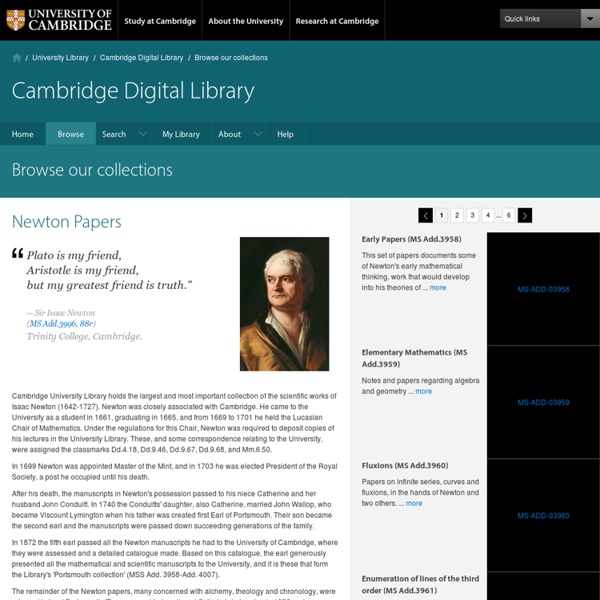Sean Carroll: Lecture Notes on General Relativity
These lecture notes are a lightly edited version of the ones I handed out while teaching Physics 8.962, the graduate course in General Relativity at MIT, during Spring 1996. Each of the chapters is available here as pdf. Constructive comments and general flattery may be sent to me via the address below.
Art Review: The Renaissance Portrait from Donatello to Bellini, The Metropolitan Museum of Art
Antonio del Pollaiuolo (Florence, 1431-1498, Rome) Portrait of a Lady Ca. 1460-65 Oil and tempera on poplar panel 20 5/8 x 14 3/8 in. Gemäldegalerie, Staatliche Museen zu Berlin NEW YORK – Giuliano de’ Medici went to church on Sunday, April 26, 1478, not realizing that it was the last thing he would ever do.
Museum
Begin digital facsimile » This Book of Hours, referred to as the Black Hours, is one of a small handful of manuscripts written and illuminated on vellum that is stained or painted black. The result is quite arresting. The text is written in silver and gold, with gilt initials and line endings composed of chartreuse panels enlivened with yellow filigree. Gold foliage on a monochromatic blue background makes up the borders.
Google for Students
Einstein for Everyone
Einstein for Everyone Nullarbor Press 2007revisions 2008, 2010, 2011, 2012, 2013 Copyright 2007, 2008, 2010, 2011, 2012, 2013 John D. Norton Published by Nullarbor Press, 500 Fifth Avenue, Pittsburgh, Pennsylvania 15260 with offices in Liberty Ave., Pittsburgh, Pennsylvania, 15222 All Rights Reserved
The Mindset List
Welcome to the Beloit College Mindset List for this year’s entering college class of 2018 The College class of 2018, starting their first year on campus this fall, arrives with a grasp of their surroundings quite distinct from that of their mentors. Born in 1996, they have always had The Daily Show to set them straight, always been able to secure immediate approval and endorsement for their ideas through “likes” on their Facebook page, and have rarely heard the term “bi-partisan agreement.” Each August since 1998, Beloit College in Beloit, Wis., has released the Beloit College Mindset List, providing a look at the cultural touchstones and experiences that have shaped the worldview of students entering colleges and universities in the fall. Behind the light humor of the Mindset List there are always some serious issues about the future of the class and their role in the future of the nation. The Mindset List is assembled each year by Ron Nief and Tom McBride at Beloit College.
Visualizing Cultures
On the Electrodynamics of Moving Bodies
By A. Einstein June 30, 1905 It is known that Maxwell's electrodynamics—as usually understood at the present time—when applied to moving bodies, leads to asymmetries which do not appear to be inherent in the phenomena.
Royal Society
The story of the Royal Society is the story of modern science. Our origins lie in a 1660 ‘invisible college’ of natural philosophers and physicians. Today we are the UK’s national science academy and a Fellowship of some 1,600 of the world’s most eminent scientists. Nullius in verba
Light and Matter: open-source physics textbooks
Extras Who's Using the Books Adoptions of Light and Matter Colleges and Universities High Schools Parker School, Kamuela, HI (Matt Hamilton) Little Axe High School, Norman, Oklahoma (Michael Dean) Orion International Academy, Pasadena, CA (John Gaines's Introduction to Physics) Ballinger High School, Ballinger, TX (Mr.



